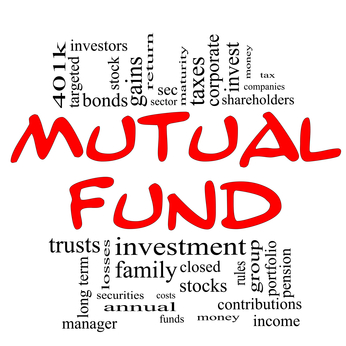Though mutual funds are already highly diversified by nature, not all of them are a good investment. In order to find the worst performing and most expensive funds, NerdWallet Investing analyzed 13,000 of the largest mutual funds currently open to investors with at least $125 million in net assets and a net expense ratio greater than 2%, to create a list of the top 12 mutual funds to avoid.
Not only did these funds perform poorly while charging a lot in fees, they also significantly underperformed their peers that in other asset classes.
The 12 Most Expensive and Worst Performing Mutual Funds
| Fund Name | Symbol | Style | 5 year Annualized Return | Net Expense Ration |
| 1. Oppenheimer Commodity Strategy Total Return Fund (Class C) | QRACX | Commodities Broad Basket | -14.61% | 2.12% |
| 2. Rydex Inverse Government Long Bond Strategy Fund (Class C) | RYJCX | Trading-Inverse Debt | -13.70% | 2.40% |
| 3. Ivy Global Natural Resources Fund (Class B) | IGNBX | Natural Resources | -12.60% | 2.20% |
| 4. Rydex Inverse S&P 500 Strategy Fund (Class C) | RYUCX | Bear Market | -12.06% | 2.42% |
| 5. Federated Prudent Bear Fund (Class C) | PBRCX | Bear Market | -10.48% | 2.50% |
| 6. DWS Gold & Precious Metals Fund (Class C) | SGDCX | Equity Precious Metals | -10.16% | 2.03% |
| 7. ALPS/Red Rocks Listed Private Equity Fund (Class A) | LPEFX | Financial | -9.45% | 3.28% |
| 8. Goldman Sachs Emerging Markets Equity Fund (Class C) | GEMCX | Diversified Emerging Mkts | -8.84% | 2.51% |
| 9. DWS Latin America Equity Fund (Class C) | SLAPX | Latin America Stock | -8.74% | 2.53% |
| 10. Dreyfus Emerging Markets Fund (Class C) | DCPEX | Diversified Emerging Mkts | -8.42% | 2.57% |
| 11. Rydex Precious Metals (Class C) | RYZCX | Equity Precious Metals | -8.27% | 2.26% |
| 12. AllianceBernstein International Value Fund (Class C) | ABICX | Foreign Large Value | -8.07% | 2.17% |
Except for Rydex Inverse S&P Strategy Fund, all the funds listed above are actively managed funds. Actively managed funds have historically had a hard time beating the market index in large part due to the higher management fees charged by active managers. According to a recent NerdWallet Investing study, though active managers outperform the index by 0.12% before fees, because they then charge more in fees than the value they create, investors were left with 0.80% lower returns than index fund investors.
What Should Investors Do?
Expense Ratio: Investors should be sure to always look at a fund’s expense ratio to get a better sense of overall after-fee returns. If a fund lists an expense ratio over 2%, consider looking for a different fund.
5 Year Annualized Return: In addition, take a look at the fund’s 5 year annualized return to gain a true sense of past performance and to check whether the fund was able to consistently outperform the market.
Risk-Adjusted Return: Lastly, be sure to choose funds with a high risk-adjusted return rate.
What Are the Top Performing Funds?
To help investors, NerdWallet Investing compiled a list of the best mutual funds of the past decade by asset class and investment style.
By Neda Jafarzadeh, a financial analyst with NerdWallet Investing. NerdWallet Investing helps investors make better financial decisions including finding the best stock trading broker to trade online.


